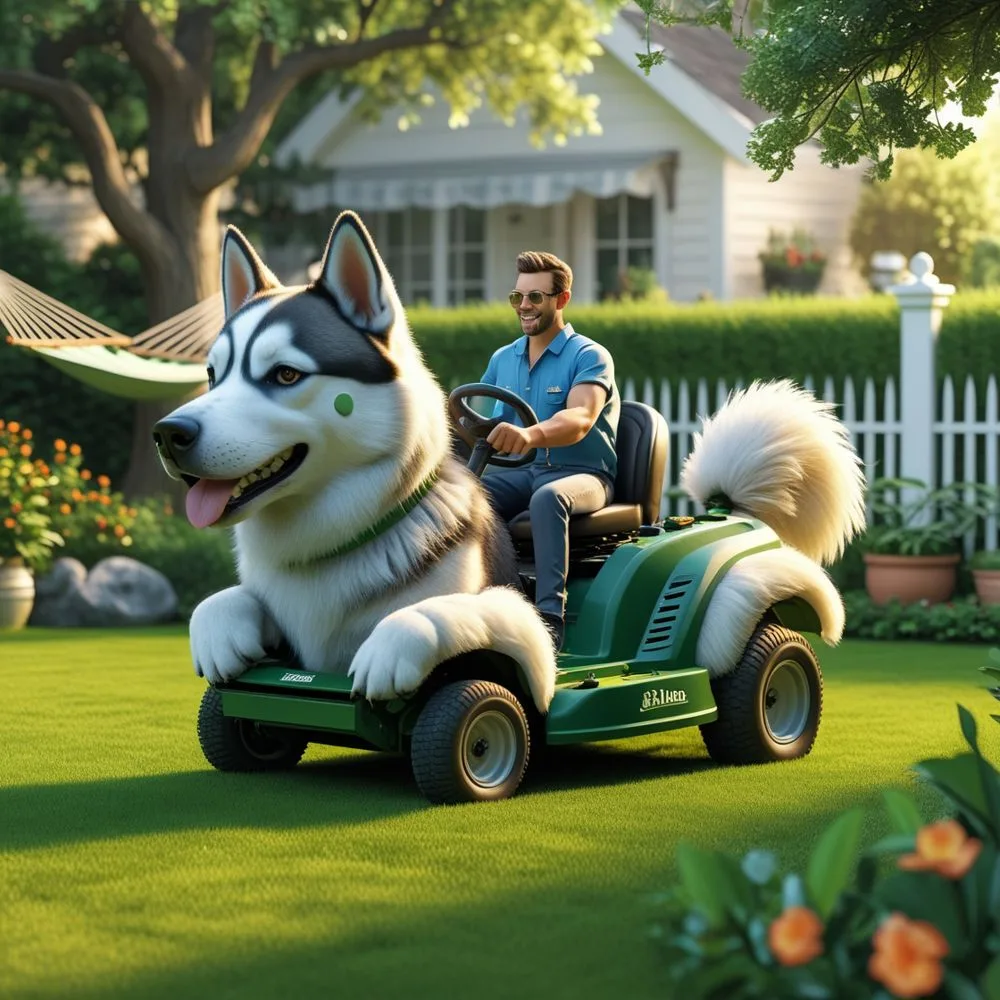Maintaining a pristine lawn while keeping your beloved canine companion safe can feel like an impossible balancing act. Every dog owner faces the challenge of finding the perfect dog lawn mower that delivers exceptional cutting performance without compromising their pet’s safety and wellbeing. Whether you’re dealing with an energetic puppy who loves to chase moving objects or a senior dog who enjoys peaceful afternoon naps on the grass, selecting the right lawn care equipment becomes a crucial decision that affects your entire household.
The modern pet owner needs more than just a standard mowing machine. Today’s dog lawn mower solutions combine cutting edge technology with thoughtful safety features designed specifically for homes with four legged family members. From noise reduction capabilities that won’t startle sensitive ears to advanced safety sensors that prevent accidents, the latest generation of pet friendly lawn equipment represents a significant leap forward in both functionality and peace of mind.
Understanding the Need for a Dog Lawn Mower
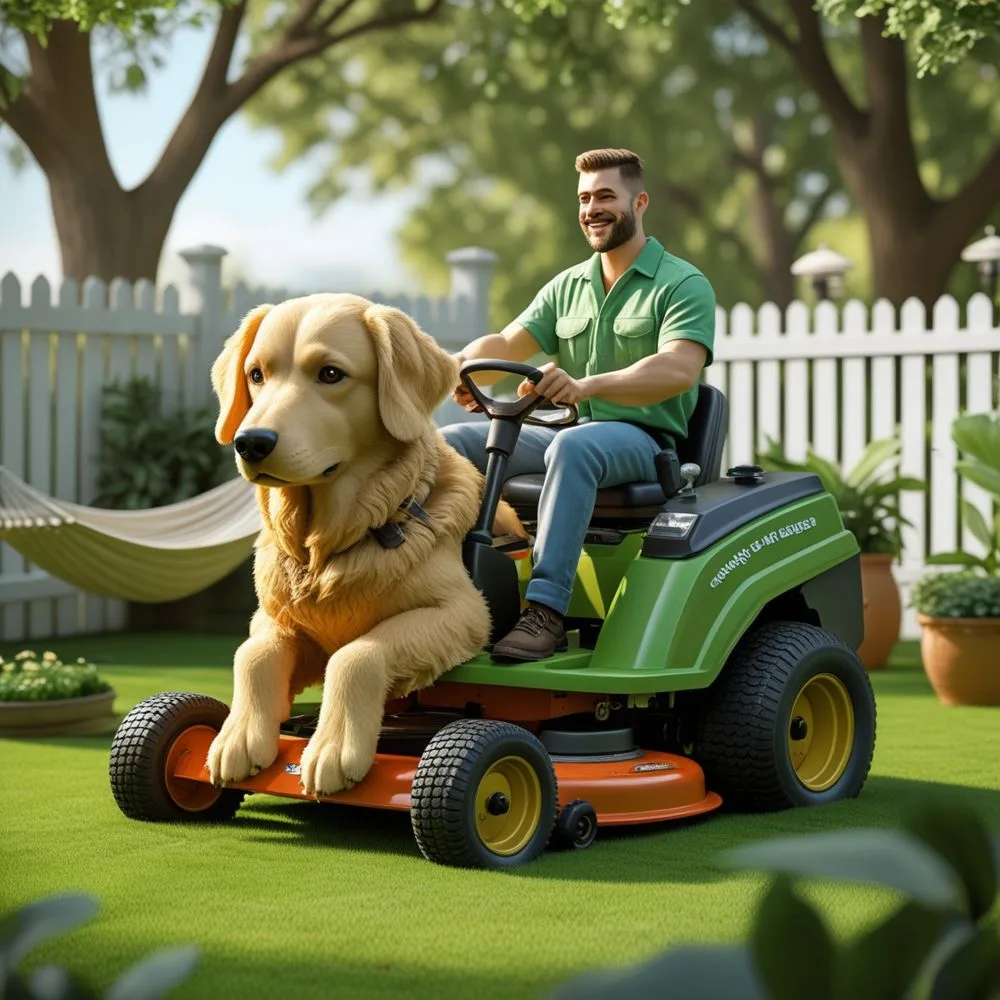
Why Regular Lawn Mowers Aren’t Always Suitable
Traditional lawn mowers present several challenges for dog owners that go beyond simple noise concerns. Most conventional mowing equipment operates at decibel levels that can cause anxiety and stress in dogs, particularly those with sensitive hearing or previous traumatic experiences with loud machinery. The unpredictable movement patterns of standard mowers can trigger chase instincts in many breeds, potentially leading to dangerous situations where pets attempt to intercept or play with the moving equipment.
Furthermore, conventional mowers often lack the specialized safety features necessary to prevent accidents when curious pets are present in the yard. The exposed blades, hot engine surfaces, and exhaust emissions create multiple hazard points that require constant vigilance from pet owners during mowing sessions.
The Benefits of Specialized Dog Lawn Mower Technology
A properly designed dog lawn mower addresses these concerns through innovative engineering solutions that prioritize both performance and safety. These specialized machines typically incorporate sound dampening technology that significantly reduces operational noise levels, creating a more comfortable environment for noise sensitive pets. Advanced sensor systems can detect nearby animals and automatically adjust operation or shut down entirely when pets venture too close to the cutting area.
Many modern dog lawn mower models also feature improved containment systems that better contain grass clippings and debris, reducing the likelihood of pets ingesting potentially harmful materials during or after mowing sessions. Enhanced air filtration systems minimize dust and particulate emissions that could irritate sensitive respiratory systems in both pets and their owners.
Types of Dog Lawn Mower Solutions

Electric Dog Lawn Mower Options
Electric models represent one of the most popular categories of dog lawn mower equipment due to their inherently quieter operation and reduced emissions. These machines eliminate the need for gasoline engines, which dramatically decreases both noise pollution and harmful exhaust fumes that could affect pets with respiratory sensitivities. Battery powered electric mowers offer the additional advantage of cordless operation, eliminating trip hazards from power cables that could endanger both operators and pets.
The instant start capability of electric dog lawn mower units means less time spent with loud starting procedures that often frighten animals. Many electric models also provide variable speed controls, allowing operators to adjust cutting pace based on the presence and behavior of nearby pets.
Robotic Dog Lawn Mower Systems
Robotic mowing systems represent the pinnacle of dog lawn mower technology, offering completely autonomous operation that removes human operators from the equation entirely. These sophisticated machines use advanced navigation systems to methodically cover lawn areas while sophisticated sensor arrays detect and avoid obstacles, including pets that may be present in the yard.
Most high quality robotic dog lawn mower units operate on programmable schedules that can be coordinated with pet routines, ensuring mowing occurs during times when dogs are typically indoors or otherwise occupied. The continuous low level operation of robotic systems maintains consistent grass length without the dramatic cutting sessions that can disturb pets and create large amounts of debris.
Manual and Push Dog Lawn Mower Alternatives
For smaller yards or owners who prefer more direct control over the mowing process, manual and push style dog lawn mower options provide excellent alternatives to powered equipment. These machines operate silently, eliminating noise concerns entirely while allowing operators to maintain complete awareness of pet locations and behaviors throughout the mowing process.
Push reel mowers designed with dog safety in mind often feature enclosed cutting mechanisms and improved handle designs that reduce the risk of accidental contact. The slower operational pace of manual equipment provides more time to observe and respond to pet behavior, making these options particularly suitable for households with young, elderly, or anxious dogs.
Essential Safety Features in Dog Lawn Mower Design
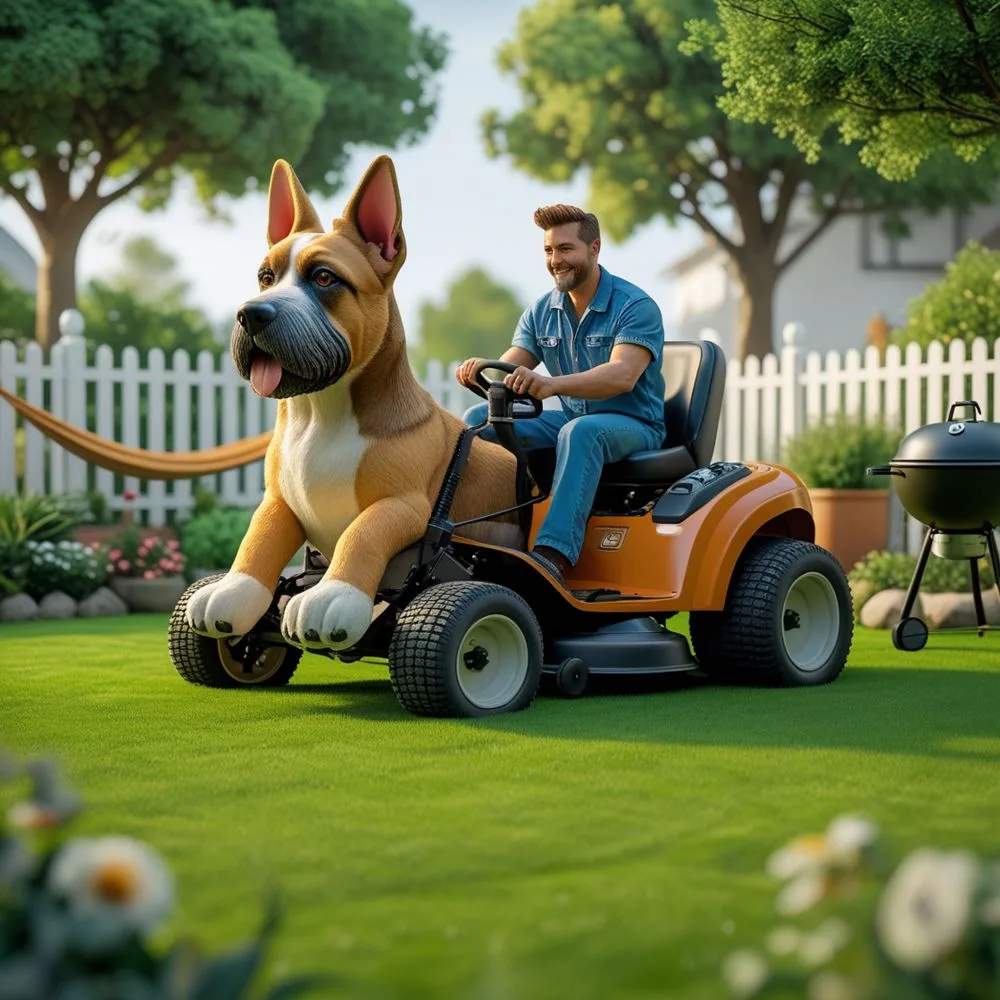
Advanced Sensor Technology
Modern dog lawn mower equipment incorporates sophisticated sensor systems that can detect the presence of pets and other obstacles in the cutting path. Ultrasonic sensors create invisible detection zones around the mower that trigger automatic shutdown or direction changes when pets approach too closely. Some advanced models even use thermal imaging technology to detect warm blooded animals in tall grass or low visibility conditions.
Motion detection sensors add another layer of protection by identifying rapid movement patterns characteristic of running or playing dogs. These systems can distinguish between normal lawn debris movement and the purposeful motion of animals, providing more accurate threat assessment and response capabilities.
Noise Reduction Technologies
Sound dampening represents a critical component of dog lawn mower design, as excessive noise can cause significant stress and behavioral problems in sensitive pets. Modern mowers employ multiple noise reduction strategies, including improved engine insulation, optimized blade designs that reduce air turbulence, and advanced muffler systems that filter harmful frequency ranges.
Some premium dog lawn mower models incorporate active noise cancellation technology similar to that found in high end headphones, actively generating sound waves that counteract engine noise. These systems can reduce perceived noise levels by up to 50 percent compared to conventional mowing equipment.
Emergency Stop Systems
Reliable emergency shutdown capabilities provide essential safety backup in situations where automated sensors may not respond quickly enough to prevent accidents. Most quality dog lawn mower units feature multiple emergency stop mechanisms, including remote control shutoffs that allow operators to halt operation instantly from anywhere in the yard.
Dead man switches that require continuous operator contact ensure that mowers stop immediately if the operator becomes distracted or needs to attend to a pet emergency. Some advanced models include smartphone connectivity that enables emergency shutdown from mobile devices, providing additional flexibility for pet owners who need to respond quickly to developing situations.
Maintenance and Care for Your Dog Lawn Mower
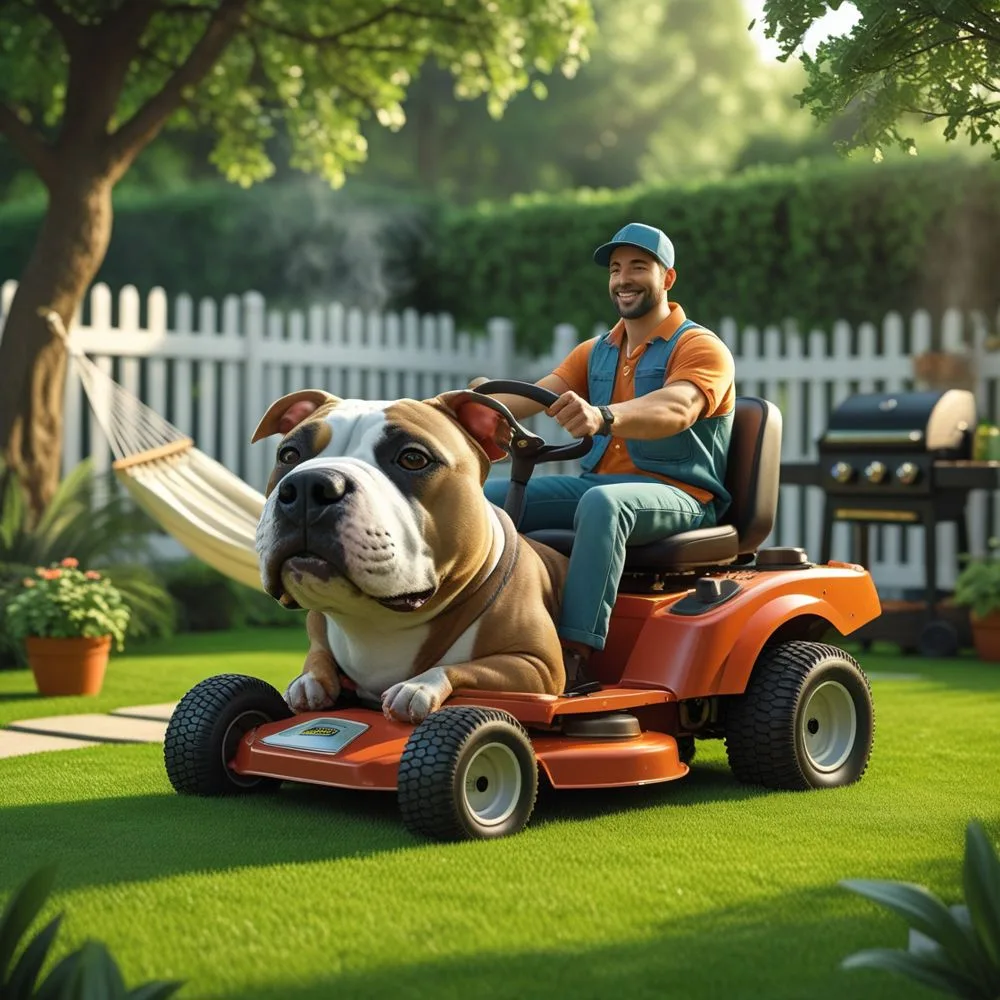
Regular Cleaning and Inspection
Proper maintenance of your dog lawn mower extends far beyond basic mechanical care to include specialized cleaning procedures that address pet related contamination. Dog hair, dander, and other organic materials can accumulate in air filters, cooling systems, and cutting chambers, potentially affecting performance and creating hygiene concerns.
Weekly inspection routines should include checking for embedded pet hair in moving parts, cleaning sensors that may be obscured by fur or debris, and ensuring that all safety systems remain fully operational. Special attention should be paid to areas where pets typically spend time, as these zones may contain higher concentrations of hair and dander that could affect mower performance.
Blade Maintenance and Safety
Sharp, properly maintained blades are essential for both cutting performance and safety in dog lawn mower applications. Dull blades require more power to cut grass effectively, resulting in increased noise levels and vibration that can disturb pets. Additionally, poorly maintained blades are more likely to throw debris or operate unpredictably, creating additional hazards for curious animals.
Regular blade inspection should include checking for damage that could result from contact with toys, bones, or other pet related items that may be present in the yard. Professional sharpening services familiar with dog lawn mower requirements can ensure that blades maintain optimal geometry for both performance and safety.
Seasonal Storage and Preparation
Proper seasonal storage protects your dog lawn mower investment while ensuring reliable operation when mowing season returns. Pet owners should pay particular attention to removing all organic materials that could attract insects or rodents during storage periods. Thorough cleaning of all surfaces that may have contacted pet hair or dander helps prevent odor development and potential pest problems.
Pre season preparation should include testing all safety systems to ensure proper operation after extended storage periods. Sensor calibration may drift over time, and electronic components should be verified to function correctly before the first use of each season.
Choosing the Right Dog Lawn Mower for Your Needs
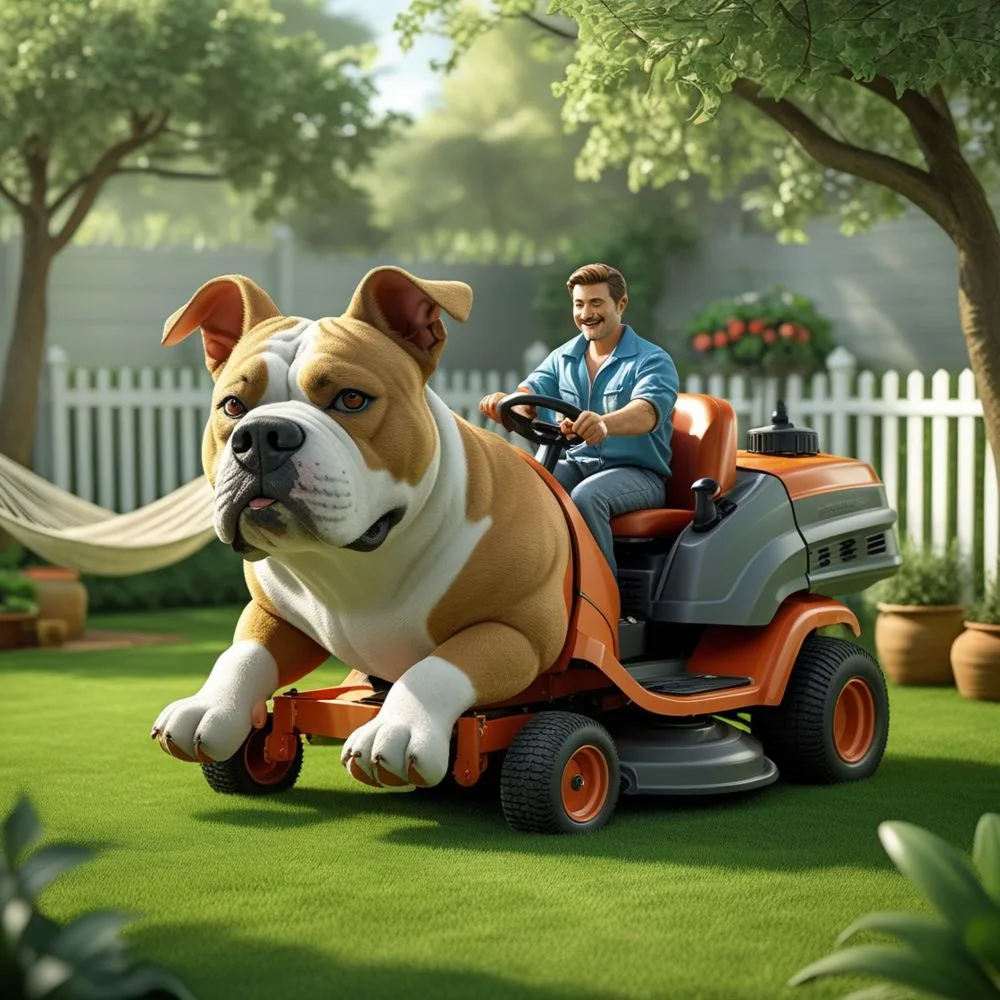
Assessing Your Yard Size and Layout
The size and configuration of your lawn area plays a crucial role in determining the most appropriate dog lawn mower solution for your situation. Smaller yards may benefit from manual or electric push mowers that provide maximum control and minimal disturbance to pets, while larger properties might require more powerful equipment or robotic systems that can handle extensive cutting areas efficiently.
Complex yard layouts with multiple obstacles, flower beds, or irregular shapes may favor mowers with superior maneuverability and obstacle avoidance capabilities. Properties with multiple distinct lawn areas might benefit from portable equipment that can be easily transported between different cutting zones.
Considering Your Pet’s Temperament and Needs
Different dog breeds and individual personalities require different approaches to lawn care equipment selection. High energy breeds that are likely to chase or investigate moving objects may need mowers with more sophisticated avoidance systems, while calm, well trained dogs might do well with standard safety features and proper supervision.
Age related considerations also play an important role in dog lawn mower selection. Senior dogs with hearing impairments may be less affected by noise but more vulnerable to unexpected encounters with moving equipment. Puppies and young dogs require maximum safety margins due to their unpredictable behavior and lack of learned caution around machinery.
Budget Considerations and Long Term Value
While initial purchase price represents an important factor in dog lawn mower selection, long term operating costs and reliability should weigh heavily in the decision making process. Higher quality equipment with robust safety features and reliable operation often provides better value over time despite higher upfront costs.
Consider the potential costs of accidents or injuries that could result from inadequate safety features when evaluating different options. The peace of mind provided by superior safety systems often justifies additional investment, particularly for households with multiple pets or particularly active animals.
Best Practices for Using Your Dog Lawn Mower

Pre Mowing Safety Procedures
Establishing consistent pre mowing routines helps ensure safe operation and provides opportunities to identify potential hazards before beginning cutting operations. Walk the entire lawn area to identify and remove pet toys, bones, waste, or other items that could interfere with mower operation or create projectile hazards.
Check pet locations and ensure that all animals are either safely contained indoors or under direct supervision in areas away from planned mowing zones. Verify that all safety systems on your dog lawn mower are functioning properly before beginning operation.
During Operation Safety Tips
Maintain constant awareness of pet locations throughout the mowing process, even when using equipment with advanced safety features. No automated system can replace attentive human supervision when it comes to pet safety around moving machinery.
Use predictable mowing patterns that allow pets to anticipate equipment movement and avoid surprise encounters. Many dogs can learn to recognize mowing routines and will naturally avoid active cutting areas when consistent patterns are followed.
Post Mowing Considerations
Allow adequate time for equipment to cool completely before allowing pets back into mowed areas. Hot engine surfaces and exhaust components can cause burns if contacted by curious animals investigating the recently used equipment.
Inspect the lawn area for any debris or clippings that might be harmful if ingested by pets. Some grass varieties or cutting conditions can produce sharp or pointed clippings that should be removed before allowing animals back into the area.
Conclusion
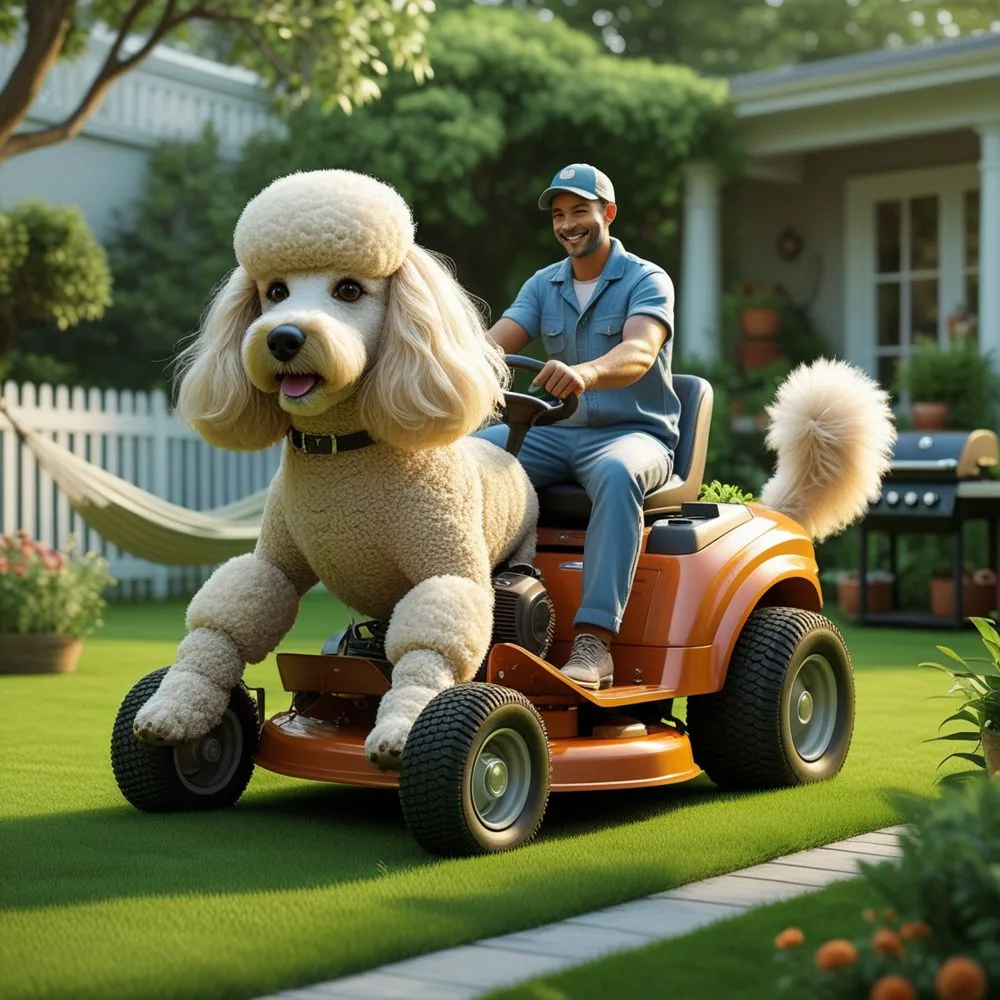
Selecting and operating the ideal dog lawn mower requires careful consideration of multiple factors that balance cutting performance with pet safety and comfort. The investment in specialized equipment designed with canine companions in mind pays dividends through reduced stress for both pets and owners, improved safety margins, and the ability to maintain beautiful lawn areas without compromising the wellbeing of beloved family members.
Modern dog lawn mower technology continues to evolve, offering increasingly sophisticated solutions that address the unique challenges faced by pet owning households. From whisper quiet electric models to fully autonomous robotic systems, today’s options provide unprecedented flexibility in creating lawn care routines that work harmoniously with pet lifestyles and needs.
The key to success lies in matching equipment capabilities with specific household requirements, including yard size, pet temperament, and operational preferences. By prioritizing safety features, maintaining equipment properly, and following established best practices, dog owners can enjoy pristine lawns while ensuring their furry companions remain safe, comfortable, and happy throughout the mowing process.
Remember that the best dog lawn mower is ultimately the one that provides reliable performance while giving you complete confidence in your pet’s safety. Take time to research options thoroughly, consider long term needs and costs, and don’t hesitate to invest in quality equipment that will serve your family well for years to come. Your dogs will thank you for the thoughtful consideration, and you’ll enjoy the peace of mind that comes from knowing you’ve made the best possible choice for your unique situation.

